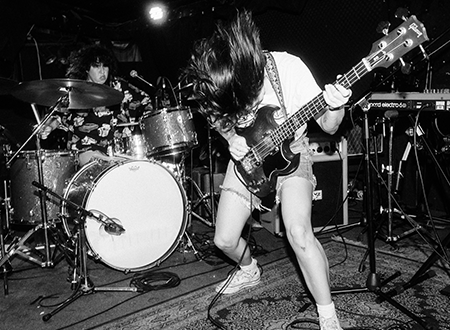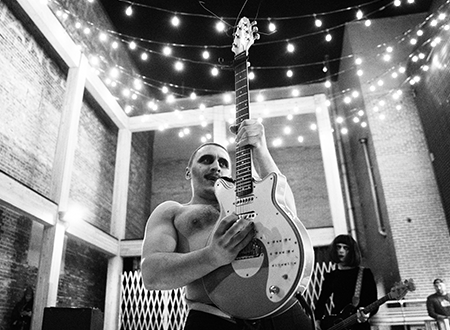Interview: Christian Pelletier Celebrating 10 Years of Up Here Festival In Sudbury
Precision Record Pressing is heading to Up Here Festival to experience Sudbury. Co-founder Christian Pelletier reflects on the festival’s 10-year journey, celebrating its unique art and music scene.
By Julia Girdharry
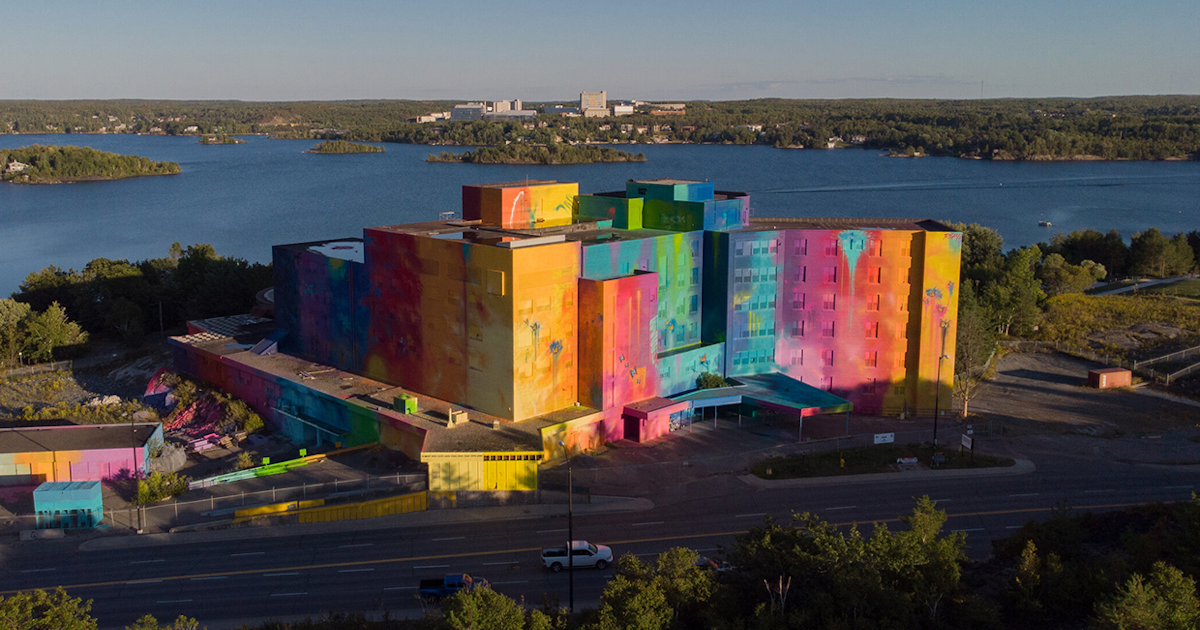
Up Here Festival is an art and culture festival that has gained attention for its unique fusion of art and music. What many might not know is that it’s renowned for creating memorable moments in music history, facilitating homecomings, and serving as a launchpad for new music. With a rich history and connections to international music culture, Up Here stands out as a beacon in the music landscape. People travel hundreds of kilometers, by plane, train, and across lakes and forests, to experience the vibrant and evolving culture this festival offers.
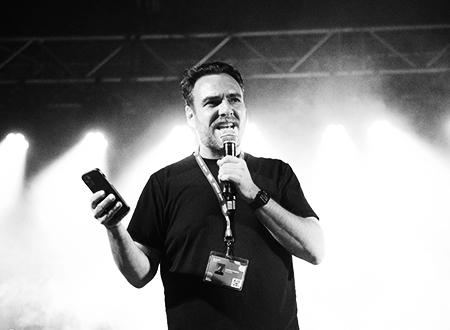
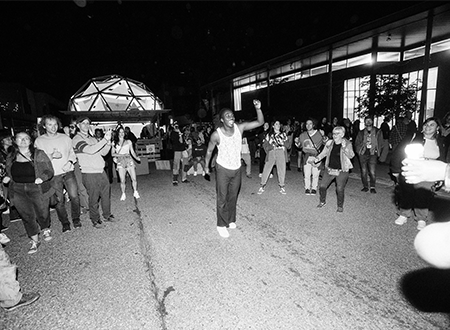
What was the inspiration behind creating Up Here, and what motivated you to bring this unique festival to life?
There’s another festival in northern Quebec, in Abitibi, specifically in Rouyn-Noranda, a small mining town with a population of about 40,000. It’s called the FME, or Emerging Music Festival. Despite its size, it brings in huge acts and many emerging artists. I saw Godspeed in a church and Patrick Watson in a parking lot pop-up show around a piano. It was incredible and made me think, “Why does this exist there and not here in Sudbury?” Sudbury is traditionally a hard rock and classic rock town, fitting for a mining community. Another festival that influenced Up Here is River and Sky, a great camping and music festival in Northern Ontario, there wasn’t an urban festival focusing on hip-hop, electronic music, and punk. Seeing what the FME was doing gave us the inspiration and framework to start our own festival.
One of our co-founders, Andrew, was inspired by his experiences at Burning Man. We wanted to mix art installations with emerging music, which fit perfectly with our existing public art projects, like murals around town.
We also noticed that many artists we wanted to see in Sudbury were bypassing it, playing in Ottawa, Toronto, Sault Ste. Marie, and Winnipeg instead. We lacked the right-sized venue—specifically, a 400-capacity space needed to attract these bands. The first year, for example, we had Suuns perform, a band that wouldn’t typically come to Sudbury. Our goal was to create a context that would bring in acts we love and share them with the Sudbury.
“We Are Up Here” serves as an umbrella for this effort. It started as a photography book about Sudbury, showcasing not just the lakes and nature, but the city’s grit. Sudbury is a tough place with its own unique charm. Under the right conditions, it reveals its incredible side—a vibrant music and art scene. We wanted to highlight the city’s lesser-known aspects and show that there’s more to love if you scratch beneath the surface. We called for submissions and received over 800 entries for our first book, which sold out even before it was officially published. For the book launches—actually, we ended up doing two books—we organized small festivals to celebrate them. We rented the Grand Theater, an 800-capacity venue, and transformed it into a vibrant space with art installations, pop-up shows, and live music. Instead of just using the stage, we had performances in the lobby, cloakroom, and even on top of the bar. That idea came to life in 2013. By the night of the second book launch, we realized, “Hey, this is a festival.” We picked a date in August and committed to it. From there, we had to figure out all the details and organize everything. The whole idea came from wanting to bring to the north what we weren’t seeing here.
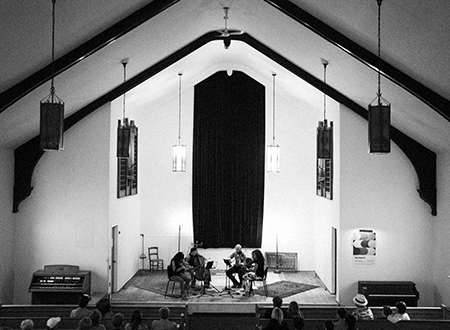
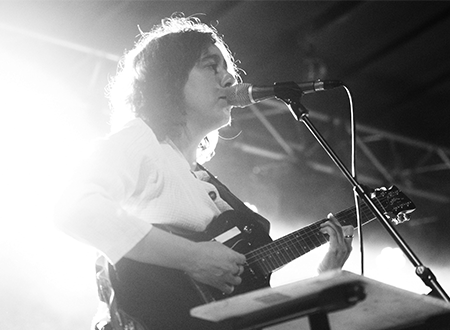
Can you talk a bit about the direction that Up Here takes?
Our festival, Up Here, is for people who don’t like festivals. We’re not aiming to be as big as Osheaga; we focus on creating intimate moments. This year, our opening night features Beverly Glenn Copeland in a cozy space for just 150 people. We could have held it on our main stage with 2000 people, but we’d lose that intimate connection.
Our artistic direction revolves around a Venn diagram of the artist, the location, and the audience. While many festivals focus on just the artist and audience, we believe the location is equally important. That’s why we have pop-up shows in unique, non-traditional venues. You get notifications for these shows through our app, and the excitement of a secret show can lead to discovering amazing artists you might not have sought out otherwise. For instance, we might place a major artist in a smaller venue like The Townhouse to create a packed and energetic atmosphere, rather than a larger venue that might feel empty.
What impact does the festival have on the city outside of music?
The obvious impact for us is the public art that sticks around after the festival. Many festivals do cool things, but once everything is packed up, all that’s left are photos and memories. With Up Here, we leave behind these giant pieces of contemporary art throughout the city, serving as lasting reminders of the memories made during the festival weekend.
In the first few years, we focused on murals to make things prettier. Now, the art has to challenge us and reflect the community. It’s okay for it to be controversial and to engage with the city on a different level. It’s not just about making things prettier. Public art should be about dialogue. Graffiti art, for instance, is political. In Canada, we’re pretty calm about the role of public art in political dialogue, but in Latin American countries, graffiti is in constant dialogue with political forces and can be violent and dangerous. Public art that remains challenges people and creates a sense of identity.
I believe in transforming a city and making places better. Public art makes places more accessible. Downtown Sudbury is small and has had a rough time over the years. It’s important to reflect that in the art we put up.
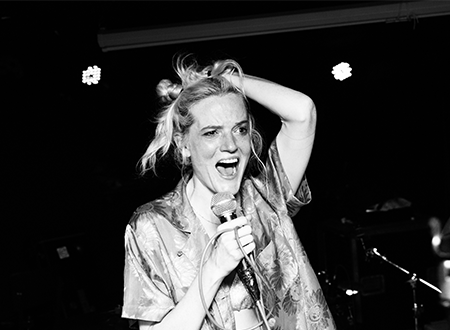
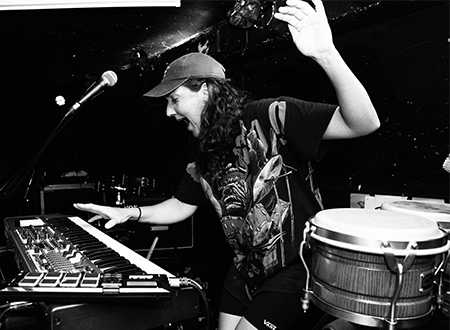
How do you create an inclusive and accessible festival?
It’s a mix of a few key things. Physically, we make sure all the venues are clearly marked with their accessibility features, like ramps and viewing areas. We also keep pricing affordable—essentially, anything before 7 p.m. is free. This includes our Northern Series shows, which are free from 5 to 7 p.m. We also offer a mystery tour on Sunday afternoons. You can follow the bus for free, or pay $15 to hop on the bus, which is still a great deal when you consider it covers transport and entry to multiple shows.
We work with community partners to make sure marginalized groups have access. For example, we provide tickets to organizations like Sudbury Independent Living, which supports people with disabilities.
Accessibility has become a bigger focus over the years. What used to be a hassle, like arranging ramps, is now standard. Ramps aren’t just for wheelchairs; they make it easier for strollers, people with walking issues, and for loading equipment. It’s about making the festival more accessible for everyone.
We want to make sure there’s a place for everyone within the festival, including those who live downtown. There have been encampments and other challenges, and we ensure that residents are included. We give tickets away to make sure they feel welcome because it’s their downtown as much as ours and offering as many resources as we can.
In our volunteer training, we work with great local organizations to help us navigate this. There’s no Starbucks downtown; we’re far from the gentrification seen in larger cities. However, it’s something I think about a lot in our work. Public art can do harm if it transforms neighborhoods in a way that makes them inaccessible to those who live and work there. We want to make sure we’re not doing that.
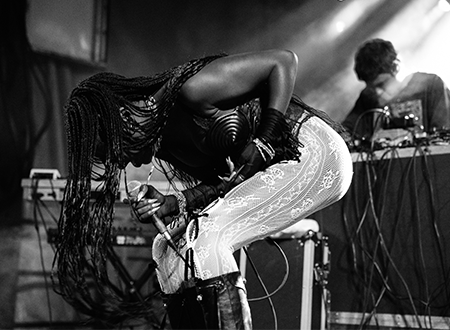
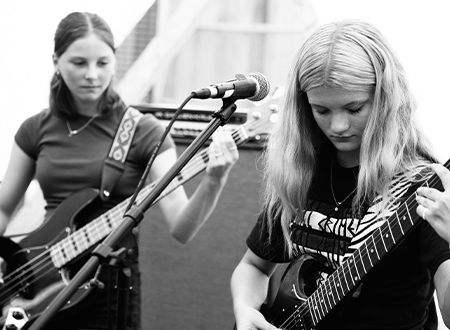
How do you curate a lineup that people don’t want to miss?
The first few years we would definitely like we would never book anything without having seen it before so like you know we were going to a bunch of festivals and seeing some cool things kind of bringing the best in now we’re a little bit more blind faith. Now, we’re at a point where we book acts without necessarily having seen them live. Take, for example, the Yonatan Gat and Maalem Hassan BenJaafar project—I’ve only listened to the recordings they sent me, which I think will be released on vinyl The recordings were so incredible that I thought, “This must be absolutely wild live.” We’ve had Yonatan before, so I know how much people love him and how powerful his performances are. So, I decided, yeah, let’s go for it.
I think that the beauty of it too is that we’re a small team that does the music curating l but we’ve got our tentacles out for everything. Jeff Houle from Strange Attractor that I was talking to you about like he’s really involved more in the Canadian punk scene like the older punk scene he knows all those folks he knows all those links between stuff.
One of the acts we’re featuring this year is La Sécurité, and the drummer from that band has another project called Pressure Pin, which is just awesome. I was having trouble finding his contact info, so I reached out to Jeff Houle, who finally got it for me. Now, we’re likely going to do a pop-up show with Pressure Pin at the festival this year as a surprise. These kinds of connections come from having our tentacles spread out everywhere.
Agents are also in tune with what we’re about, so they only pitch projects that fit our vibe. I don’t get random pitches for acts that don’t align with our style—they know our signature, they know what we want, and that’s been really beneficial over the years.
It’s a delicate balancing act, though, because we’re called Up Here, so we’re committed to highlighting northern artists as well. We’ve got our fingers on the pulse of what’s going on in the Thunder Bay, North Bay, Timmins, and Sault Ste. Marie scenes, and we bring that into our programming.
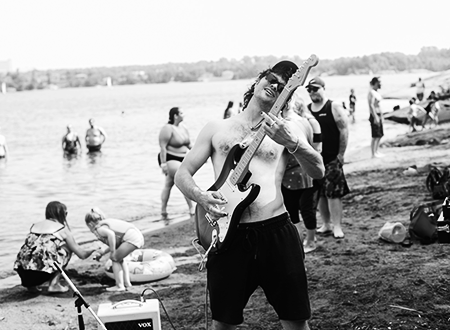
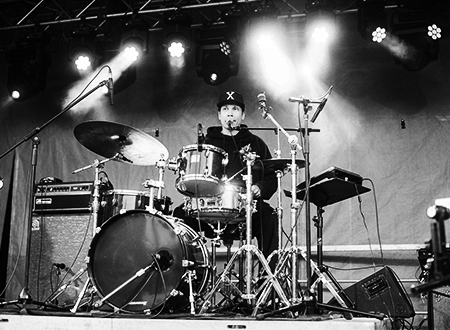
What do you envision for the future of up here to look like how do you think or have you planned it to evolve?
It’s funny because when we started, people would ask me what I imagined year 10 would be like, and now that we’re here, I realize I have to pivot. There’s this idea of growing the industry side of the festival. We’re already considered an unofficial showcase event—festival bookers, agents, managers, and other industry folks come to Up Here to discover new acts and connect with one another. That’s already happening, but I think it would be cool to lean into that more and make it an official part of the festival.
I’m not talking about adding a full-on conference, but maybe incorporating more networking events or panel discussions. We’ve done some of that over the years, mainly around public art, but I think expanding it to the music industry could be really beneficial.
Another idea we’re exploring is connecting with Sudbury’s strong technology sector, which is heavily influenced by the mining industry. We work with a lot of artists who are in the mining sector by day but want to create cool, innovative things by night. It would be interesting to lean into that synergy a bit more.
Lastly, I’ve been thinking about adding a small film component to the festival. Not a full film festival, but maybe screening some music-related documentaries. For instance, Beverly Glenn-Copeland’s documentary is fantastic, and we had another band we were working on booking this year that has a great documentary too. I think there’s a way to incorporate these elements without turning into something like South by Southwest. We want to keep it intimate, accessible, and true to our roots.
As for the festival itself, I don’t see us booking huge headliners or anything like that. What I envision is scaling up the number of emerging artists, maybe having four late-night events happening simultaneously instead of two, but keeping it within the same venues. It’s about adding more diversity and creating more opportunities to discover something new, rather than just going bigger for the sake of it.
